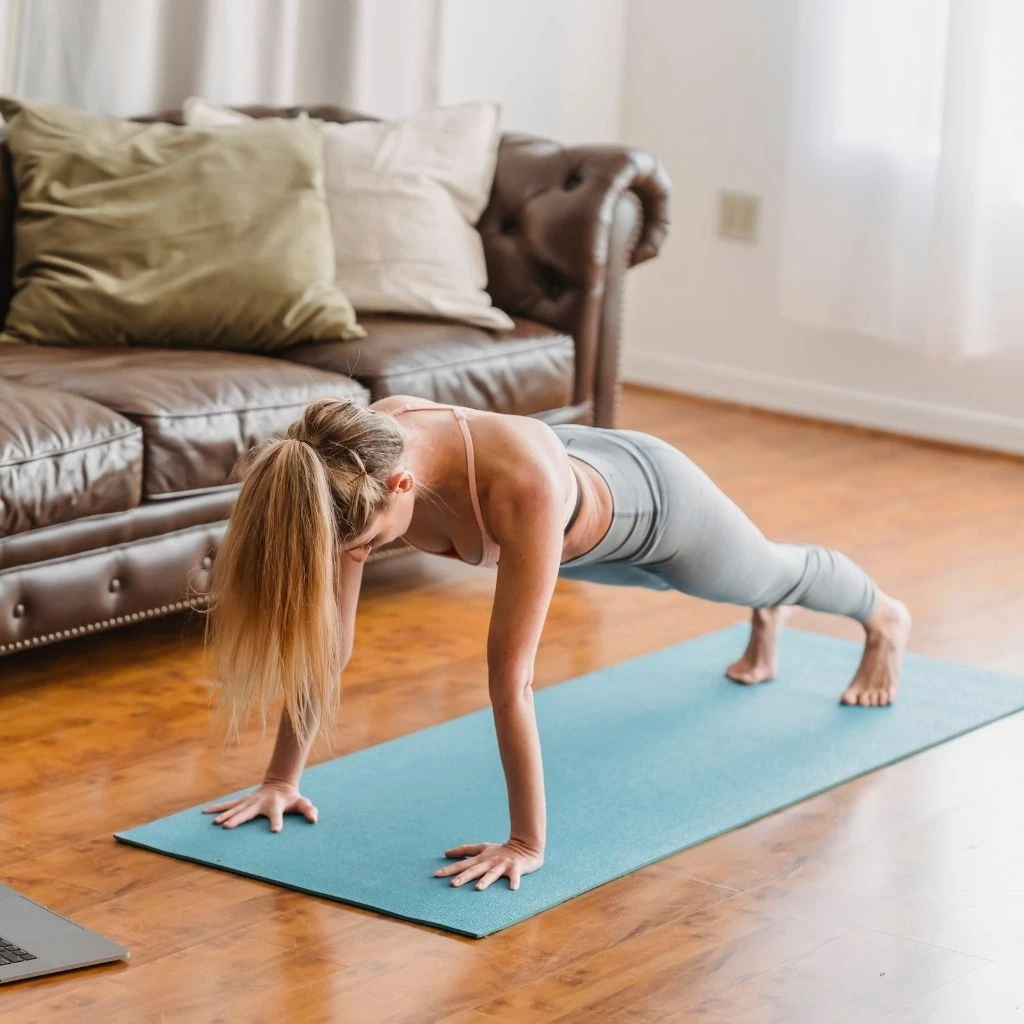- Jared Lean
- 0 Comments
Maintaining good posture is crucial for overall health and well-being. Poor posture can lead to chronic pain, reduced mobility, and even long-term spinal issues. If you spend long hours sitting at a desk, looking down at a screen, or engaging in repetitive motions, your posture may suffer over time. Fortunately, targeted exercises can help strengthen the muscles that support proper alignment and alleviate tension in overworked areas. In this blog, we’ll explore the best exercises to improve posture, backed by chiropractic insights. Whether you’re dealing with slouched shoulders, a forward head position, or lower back pain, incorporating these movements into your routine can make a significant difference.
Understanding the Key Muscles for Good Posture
Good posture is more than just standing up straight; it requires a coordinated effort from multiple muscle groups to maintain proper alignment. The body relies on a balance between strength and flexibility in these muscles to keep the spine, shoulders, and pelvis in an optimal position. Weakness or tightness in any of these areas can lead to postural imbalances, discomfort, and even chronic pain. To effectively improve posture through exercise, it’s essential to understand the key muscle groups involved.
1. Core Muscles
The core is the foundation of good posture, consisting of muscles in the abdomen, lower back, and pelvis. These include:
- Rectus abdominis: Commonly referred to as the “six-pack” muscle, it plays a role in maintaining upright posture.
- Transverse abdominis: The deepest abdominal muscle, providing stability to the spine and pelvis.
- Obliques: These muscles support rotational movements and lateral stability.
- Multifidus and erector spinae: Essential for spinal extension and maintaining an erect posture.
Weak core muscles can lead to excessive spinal curvature, contributing to lower back pain and poor posture.
2. Back Muscles
Strong back muscles are crucial for counteracting the forward pull of daily activities such as sitting and using electronic devices. The most important postural muscles in the back include:
- Trapezius: This large muscle stabilises the shoulders and upper back.
- Rhomboids: Located between the shoulder blades, they help retract the shoulders and prevent slouching.
- Latissimus dorsi: The broad back muscle that assists in maintaining spinal alignment.
Neglecting back muscles can result in rounded shoulders and a hunched appearance, commonly seen in those with poor desk habits.
3. Neck and Shoulder Muscles
Postural issues in the neck and shoulders are increasingly common due to prolonged screen time. The following muscles are key for proper head and shoulder alignment:
- Sternocleidomastoid: Helps control head movement and positioning.
- Upper trapezius and levator scapulae: Often overworked due to poor posture, leading to stiffness and tension headaches.
Strengthening and stretching these muscles can help correct forward head posture and reduce neck strain.
4. Hip and Lower Body Muscles
The lower body also plays a significant role in posture. Weak glutes and tight hip flexors can lead to postural distortions such as anterior pelvic tilt. Key muscles include:
- Gluteus maximus, medius, and minimus: Essential for hip stability and spinal support.
- Hip flexors: Tight hip flexors can pull the pelvis forward, leading to lower back discomfort.
- Hamstrings and quadriceps: These muscles influence pelvic positioning and lower back posture.
Understanding these muscles is the first step in correcting postural imbalances. In the next section, we’ll explore the best exercises to strengthen these muscles and support better posture.

Best Exercises to Improve Posture
Now that we understand the key muscles responsible for maintaining good posture, the next step is incorporating exercises that strengthen these muscles and promote spinal alignment. Regularly performing targeted movements can help correct postural imbalances, alleviate tension, and improve overall body mechanics. Below are some of the most effective exercises for better posture.
1. Plank
The plank is one of the best exercises for core stability, strengthening the deep abdominal muscles that support the spine.
How to do it:- Start in a forearm or full-arm plank position with your elbows directly under your shoulders.
- Engage your core, keeping your body in a straight line from head to heels.
- Hold for 30–60 seconds, ensuring your lower back does not sag.
Benefits: Improves core endurance, reduces lower back strain, and promotes an upright posture.
2. Wall Angels
This exercise is great for improving shoulder mobility and counteracting the effects of slouching.
How to do it:- Stand with your back against a wall, feet about 10cm away.
- Press your lower back, shoulders, and head against the wall.
- Raise your arms to shoulder height and slowly move them up and down like a snow angel.
- Repeat for 10–15 repetitions.
Benefits: Enhances shoulder flexibility, strengthens postural muscles, and improves spinal alignment.
3. Bird-Dog
The bird-dog exercise strengthens the core and lower back while promoting balance and stability.
How to do it:- Start on all fours with your wrists under your shoulders and knees under your hips.
- Extend one arm and the opposite leg simultaneously while keeping your back straight.
- Hold for a few seconds, then return to the starting position.
- Repeat on the other side for 10–12 repetitions per side.
Benefits: Builds core strength, stabilises the spine, and improves overall posture.
4. Glute Bridges
Weak glutes can lead to poor posture and lower back pain. This exercise strengthens the glutes and stabilises the pelvis.
How to do it:- Lie on your back with your knees bent and feet flat on the floor.
- Engage your core and lift your hips until your body forms a straight line from shoulders to knees.
- Hold for a few seconds, then lower slowly.
- Repeat for 12–15 reps.
Benefits: Corrects pelvic misalignment, strengthens the lower back, and enhances posture.
5. Chin Tucks
Chin tucks help reduce forward head posture, a common issue caused by prolonged screen use.
How to do it:- Sit or stand upright with your shoulders relaxed.
- Gently tuck your chin toward your chest without tilting your head.
- Hold for 5 seconds and repeat 10–15 times.
Benefits: Strengthens neck muscles, improves head alignment, and reduces neck strain.
Incorporating these exercises into your daily routine can significantly improve posture. In the next section, we’ll discuss lifestyle adjustments that complement these movements.

Lifestyle Adjustments to Support Better Posture
While exercises play a crucial role in improving posture, they are most effective when combined with lifestyle adjustments that promote proper alignment throughout the day. Many common habits—such as prolonged sitting, poor workstation ergonomics, and improper sleeping positions—can counteract the benefits of exercise. By making simple but impactful changes, you can create an environment that supports long-term postural health.
1. Optimise Your Workstation Ergonomics
Many people in New Zealand spend long hours working at a desk, which can contribute to poor posture and musculoskeletal discomfort. A well-designed workstation can significantly reduce strain on the body.
Tips for a posture-friendly workstation:- Monitor height: Position your computer screen at eye level to prevent forward head posture.
- Chair support: Use an ergonomic chair with lumbar support to maintain the natural curve of your lower back.
- Keyboard and mouse placement: Keep them at elbow height to avoid shoulder strain.
- Foot positioning: Keep feet flat on the floor or use a footrest to reduce lower back stress.
These adjustments help minimise tension in the neck, shoulders, and back, allowing you to maintain good posture effortlessly.
2. Take Frequent Movement Breaks
Remaining in one position for too long—whether sitting or standing—can lead to stiffness and postural imbalances. Incorporating movement breaks throughout the day can help reset your posture and reduce muscle fatigue.
Ways to add movement to your routine:- Set a timer to stand and stretch every 30–60 minutes.
- Use a standing desk or alternate between sitting and standing.
- Walk around while taking phone calls or meetings.
- Perform simple stretches, such as shoulder rolls and back extensions, to relieve tension.
Regular movement encourages blood flow and helps reinforce the postural muscles you’re strengthening through exercise.
3. Maintain Proper Posture While Sitting
Even with an ergonomic setup, maintaining awareness of your posture is key. Poor sitting habits—such as slouching or leaning forward—can lead to chronic discomfort.
How to sit with good posture:- Keep your back straight with shoulders relaxed and slightly pulled back.
- Ensure your hips are level with or slightly higher than your knees.
- Avoid crossing your legs, as this can create postural imbalances.
- Keep your head aligned with your spine instead of jutting forward.
By making a conscious effort to sit correctly, you can prevent postural issues before they develop into chronic conditions.
4. Sleep in a Spine-Friendly Position
Poor sleeping posture can undo the progress you make during the day. The way you sleep can either support spinal alignment or contribute to aches and stiffness.
Tips for better sleep posture:- Sleep on your back or side, as stomach sleeping can strain the neck and lower back.
- Use a supportive pillow that keeps your head aligned with your spine.
- Place a pillow between your knees if sleeping on your side to reduce lower back strain.
- Choose a mattress that provides adequate support without excessive softness.
Creating an optimal sleep environment allows your body to recover and maintain proper spinal alignment overnight.
5. Be Mindful of Posture Throughout the Day
One of the most effective ways to improve posture is simply being aware of it. Practicing mindfulness about how you sit, stand, and move can reinforce good habits.
Simple reminders to maintain good posture:- Check your posture whenever you pass a mirror or reflective surface.
- Use phone reminders to prompt posture checks throughout the day.
- Consider posture-correcting devices or apps that provide feedback.
With consistent awareness and small daily adjustments, maintaining good posture becomes second nature.
By incorporating these lifestyle changes alongside posture-improving exercises, you can achieve lasting improvements in spinal health and overall well-being. In the next section, we’ll discuss how Balmoral Chiropractic can provide expert guidance and support to enhance your posture further.

Why Choose Balmoral Chiropractic for Posture Improvement?
Improving your posture requires more than just exercise and lifestyle adjustments—it also benefits from expert guidance tailored to your unique needs. At Balmoral Chiropractic, we specialise in helping Auckland residents achieve better posture and spinal health through professional chiropractic care. Whether you’re experiencing postural issues due to work habits, sports activities, or chronic pain, our team provides personalised treatment plans to support long-term alignment and well-being.
Expert Chiropractic Care for Posture Correction
Our experienced chiropractors assess your posture and spinal health using evidence-based techniques. We focus on identifying misalignments and underlying causes of poor posture, allowing us to develop customised care plans that address your specific concerns.
Our posture-focused chiropractic services include:- Postural Assessments: We evaluate spinal alignment and muscle imbalances to pinpoint areas needing improvement.
- Chiropractic Adjustments: Gentle, targeted spinal manipulations help restore proper alignment and reduce tension.
- Corrective Exercises: We provide tailored exercise recommendations to strengthen key postural muscles.
- Ergonomic Guidance: Our team offers advice on workplace setup, sleeping positions, and daily habits to support better posture.
Why Auckland Residents Trust Balmoral Chiropractic
As a trusted chiropractor in Auckland, Balmoral Chiropractic is committed to providing patient-centred care that prioritises your health and comfort. We take the time to understand your posture-related concerns and create a holistic treatment approach designed to help you move, feel, and live better.
What sets us apart?- Experienced professionals: Our skilled chiropractors have extensive experience in posture correction and spinal health.
- Personalised treatment: Every patient receives a customised care plan based on their individual needs.
- Modern techniques: We use the latest chiropractic methods to ensure safe and effective posture improvement.
- Supportive environment: Our clinic provides a welcoming and professional space for all patients.
Book Your Posture Consultation Today
Don’t let poor posture affect your daily life and well-being. Whether you’re looking to correct postural imbalances, reduce pain, or prevent future issues, Balmoral Chiropractic is here to help. Contact us today to schedule a consultation and take the first step toward better posture and overall spinal health.
Call us at: +64 27 466 4421 to book your appointment.

Frequently Asked Questions
1. What are the best exercises to improve posture?
The best exercises for improving posture include core-strengthening movements like planks, back exercises such as wall angels and bird-dogs, and flexibility exercises like chest stretches. These help to correct muscle imbalances, enhance spinal alignment, and support better posture.
2. How long does it take to see improvements in posture?
Posture improvements depend on consistency and the severity of postural issues. With regular exercises and chiropractic care, many people notice positive changes within a few weeks. Long-term posture correction requires ongoing practice and lifestyle adjustments.
3. Can poor posture cause back and neck pain?
Yes, poor posture can contribute to muscle strain, joint stress, and spinal misalignments, leading to discomfort and pain in the back, neck, and shoulders. Addressing posture issues can help alleviate these symptoms and prevent long-term complications.
4. How does chiropractic care help with posture improvement?
Chiropractic care focuses on spinal alignment and musculoskeletal balance, both of which are essential for good posture. Chiropractors use adjustments, corrective exercises, and ergonomic advice to help patients improve their posture and overall spinal health.
5. Are posture correctors effective?
Posture correctors can provide temporary support, but they should not replace strengthening exercises and movement-based solutions. Over-reliance on posture braces can weaken the muscles needed for proper alignment.
6. What lifestyle changes can help improve posture?
Simple lifestyle changes such as setting up an ergonomic workstation, taking frequent movement breaks, sitting correctly, and sleeping in a spine-friendly position can significantly support posture improvement.
7. Can chiropractic adjustments fix posture permanently?
Chiropractic adjustments help restore proper spinal alignment, but maintaining good posture requires a combination of adjustments, exercises, and healthy daily habits. Regular check-ups with a chiropractor can support long-term posture maintenance.
8. How often should I see a chiropractor for posture improvement?
The frequency of visits depends on your specific posture concerns and goals. Some patients benefit from weekly sessions initially, followed by maintenance visits every few months. A chiropractor will create a personalised plan based on your needs.
